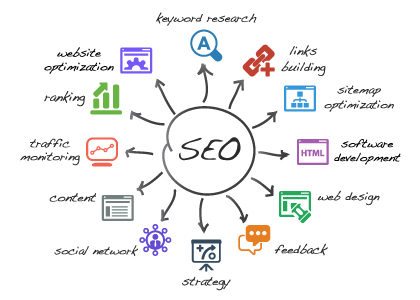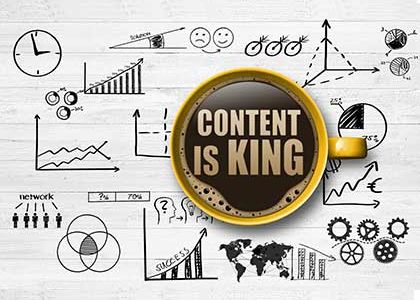Let’s say that you run a business. What do you want more than anything else? Customers, of course! Local search engine optimization can help you achieve that objective.
We’re pretty deep into the twenty-first century at this point, so it’s very likely that many if not most of your customers will find you through an online search—probably by using Google. You’ve surely conducted many search queries yourself that involve some form of a desired good/service/merchant combined with a location, such as: “Italian restaurant North Canton” or “dog grooming Thomasville” or “locksmiths near me.”
The first thing you’re likely to see upon doing that is a map showing your surrounding area with red indicator flags highlighting the locations of the results that match your search. Below that, you’ll see a list of the names of each of the businesses that are marked on the map along with important information about them such as the full name of the business, a short description of it, its address and phone number, its hours, and the number and quality of the reviews the business has earned. Our local search engine optimization services can help you show up more prominently in these local search results.
Unless you’re doing a really exhaustive search, you’re likely going to weigh the options that appear nearest the top most heavily. You might not even move through most of the list if it looks like what you see first meets your needs. After all, we trust Google to give us relevant and well-reviewed answers. So we’ll probably choose what it seems to recommend.
If you run a business, you want to be one of those top results.
What can you do to help put the webpage for your business there? First of all, you want to make sure to have all of your Google My Business components in order. That will help your local search engine optimization. Be sure that the basic details of your business such as its location and contact information are represented accurately. The NAP (name, address, and phone number) should be exactly the same across all local citations for the best local search engine optimization results. Businesses that have reviews and photos tend to rank well also. Content, as always, drives traffic, as websites with a lot of words on each page—especially target keywords—tend to have an advantage over those that do not. But perhaps the most important determining factor is the number of backlinks to it that any page has. The more links to your webpage from other pages (along with their relevance and overall quality) the better.
We thought it might be helpful to show you what great local search engine optimization looks like in practice, so we took a screenshot of the Triple Canopy Media local search results in Google. Just click on the image below to go to the live search results.
At Triple Canopy Media, we understand how local search works. We want your business to be found locally. We want to send more traffic your way. We want you to succeed. And we’re here for you.






 As a small business that specializes in search marketing we hold firm to the belief that we should lead by example. You won’t find Triple Canopy Media promoting its
As a small business that specializes in search marketing we hold firm to the belief that we should lead by example. You won’t find Triple Canopy Media promoting its  News outlets are what “economic maximizers.” This is a polite way of saying, “lazy.” In our 24-hour news cycle, the media are starved for content. After all,
News outlets are what “economic maximizers.” This is a polite way of saying, “lazy.” In our 24-hour news cycle, the media are starved for content. After all, 
 Both Search Engine Marketing and Search Engine Optimization have their place in the search marketing industry. Triple Canopy Media offers both services, but we offer search engine marketing (in the paid sense) predominantly as a complement or supplement to search engine optimization. The goal for us is to displace the need for search engine marketing by obtaining top search engine rankings. Of course, there will always be a place for targeted ads, content network ads, and other sorts of contextual advertising that can not be directly displaced by search engine optimization.
Both Search Engine Marketing and Search Engine Optimization have their place in the search marketing industry. Triple Canopy Media offers both services, but we offer search engine marketing (in the paid sense) predominantly as a complement or supplement to search engine optimization. The goal for us is to displace the need for search engine marketing by obtaining top search engine rankings. Of course, there will always be a place for targeted ads, content network ads, and other sorts of contextual advertising that can not be directly displaced by search engine optimization.